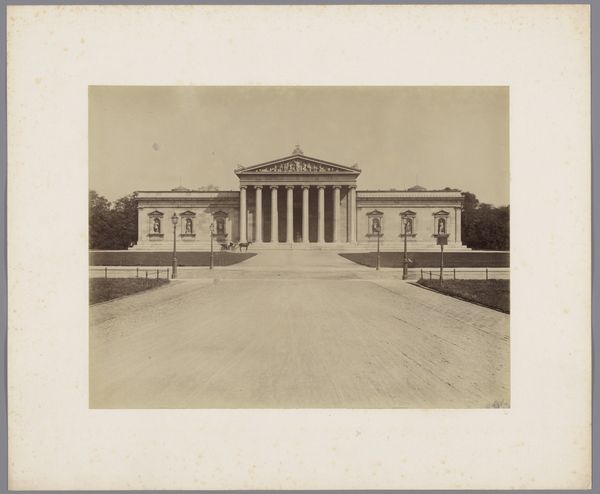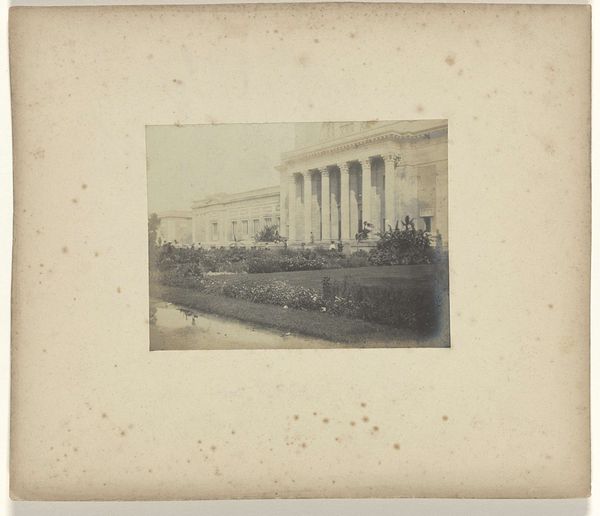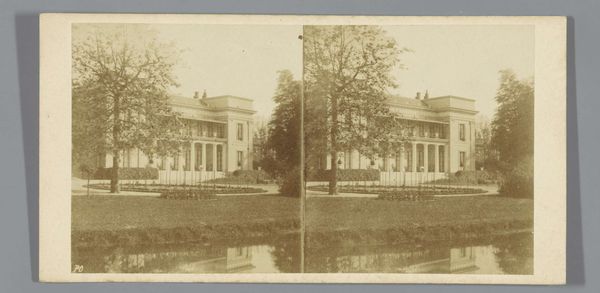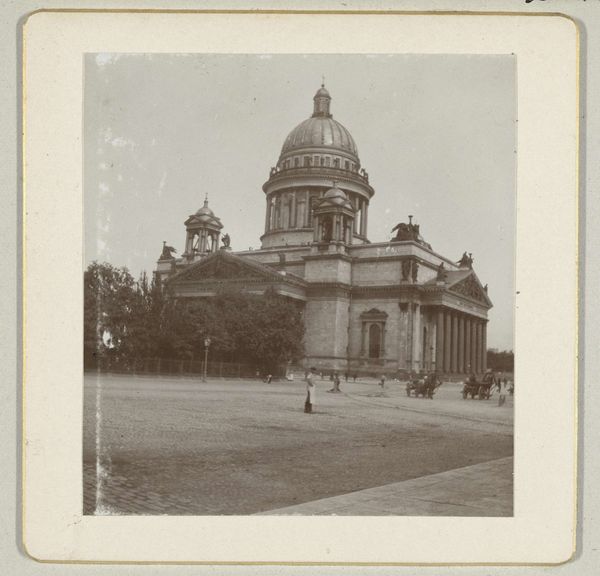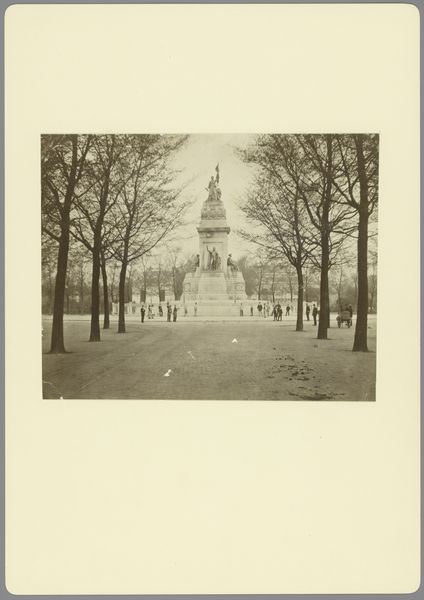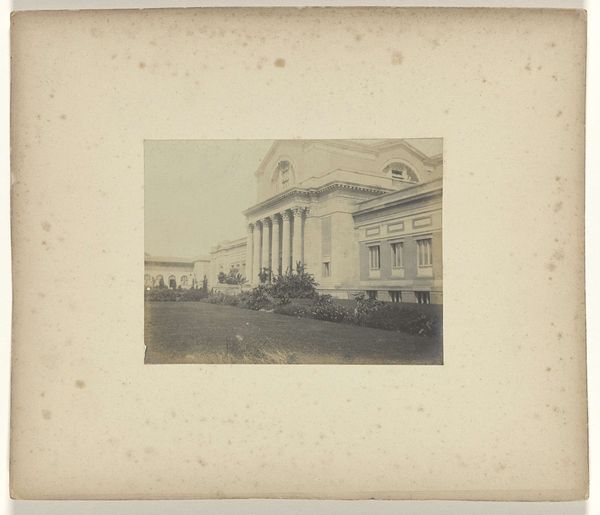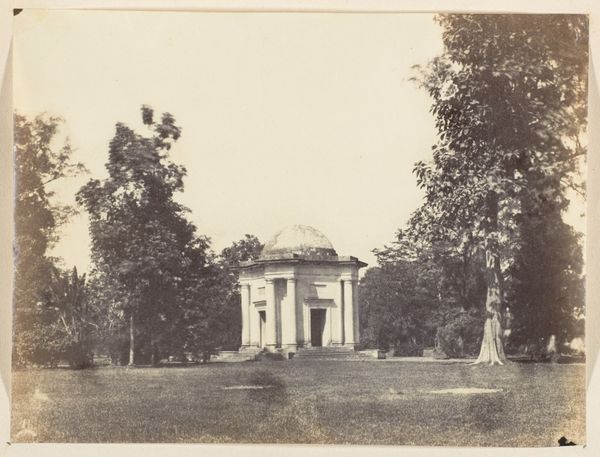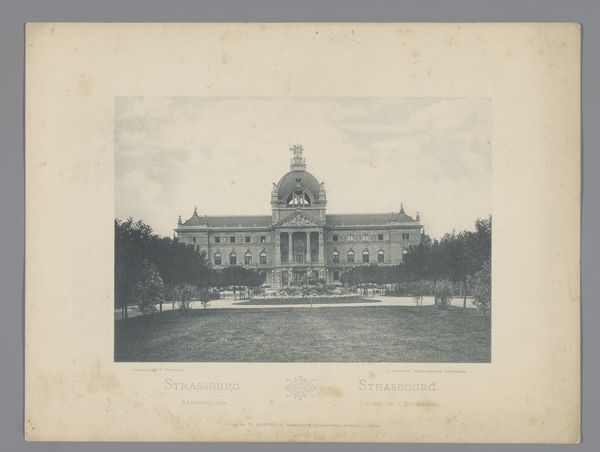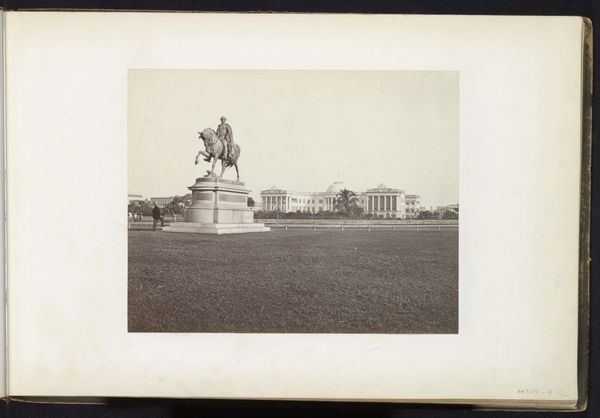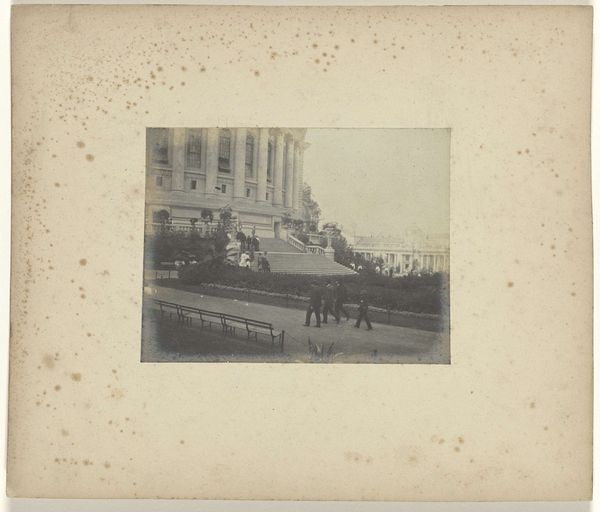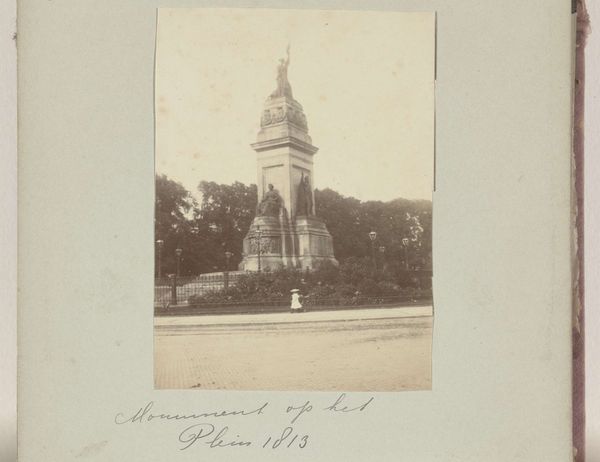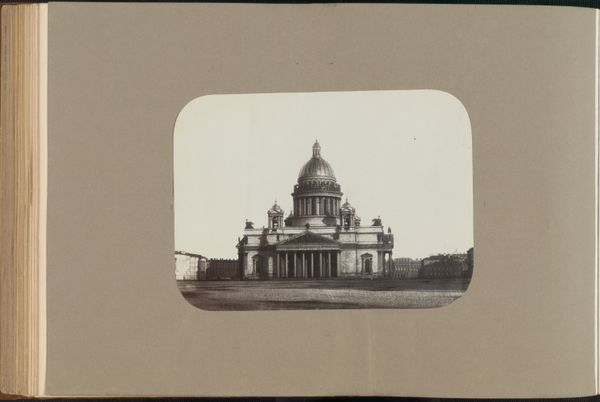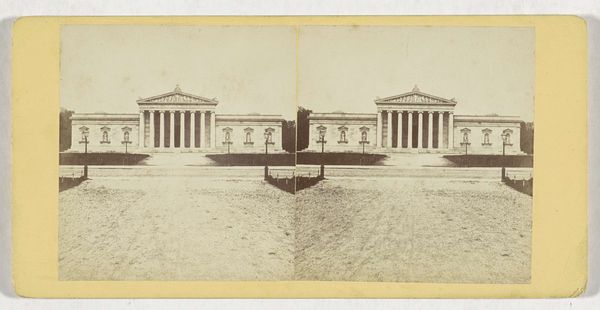
Voorkant van de Sint Isaac Kathedraal in Sint-Petersburg, ontworpen door Auguste Montferrand. 1898
0:00
0:00
henrypauwvanwieldrecht
Rijksmuseum
print, photography
# print
#
landscape
#
photography
#
cityscape
#
watercolor
Dimensions: height 100 mm, width 100 mm, height 259 mm, width 365 mm
Copyright: Rijks Museum: Open Domain
Curator: Standing before us, we have an image titled, "Voorkant van de Sint Isaac Kathedraal in Sint-Petersburg, ontworpen door Auguste Montferrand," a photograph dating back to 1898 from the Rijksmuseum collection. Editor: The subdued palette and the slightly soft focus lend a very tranquil, almost dreamlike quality to the grandiose architecture. Curator: Indeed. St. Isaac’s Cathedral was a crucial symbol of imperial power and religious authority in Tsarist Russia. Consider its construction in the context of 19th-century St. Petersburg, a city intentionally built to project power and modernity. Editor: I notice the composition—the symmetrical layout, the clear foreground leading to the imposing facade, those receding planes. The eye is relentlessly drawn upward to that massive dome. It's a masterful play of perspective and scale to instill a sense of awe. Curator: It’s quite deliberate. The cathedral’s construction itself was laden with political intention, designed to impress both its citizens and foreign powers with Russia’s cultural and engineering prowess. The choice of location, the sheer size – everything contributed to a visual narrative of dominance. Editor: Though visually arresting, the muted tones do soften this sense of raw power, perhaps unintentional or a trick of the photographic process itself. There’s an interesting contrast there: the absolute geometry of the architecture against the amorphous forms of nature surrounding it. Curator: The photographer, Henry Pauw van Wieldrecht, clearly understood how to capture the spirit of a place so closely intertwined with Russian identity. The park in the foreground, while seemingly pastoral, actually reinforces the distance between the common citizen and the grandeur of state power embodied in the Cathedral. Editor: And yet, there are figures within the frame. Two at the very least. Curator: Implying the church's ongoing relationship with society. It is also a statement that even the smallest subjects still participate and move in this carefully engineered public space. Editor: I hadn't considered the scale aspect that way. It casts new light on how successfully symmetry plays to create a lasting feeling. Curator: Precisely, now we move on with the tour…
Comments
No comments
Be the first to comment and join the conversation on the ultimate creative platform.
